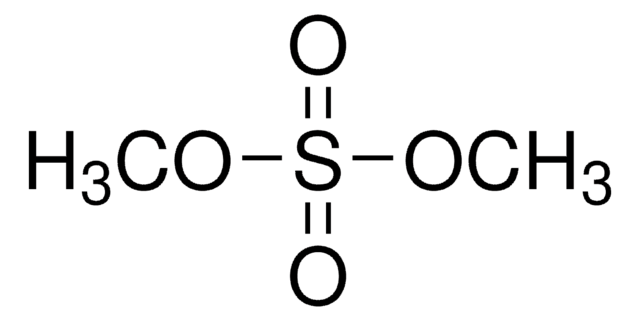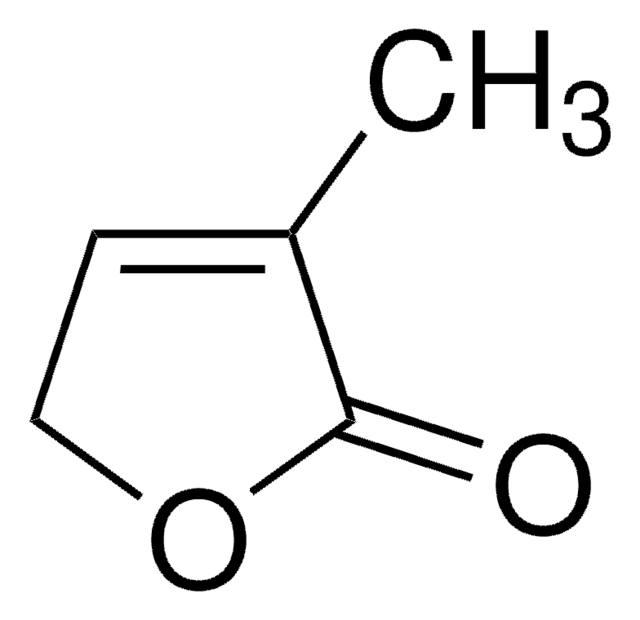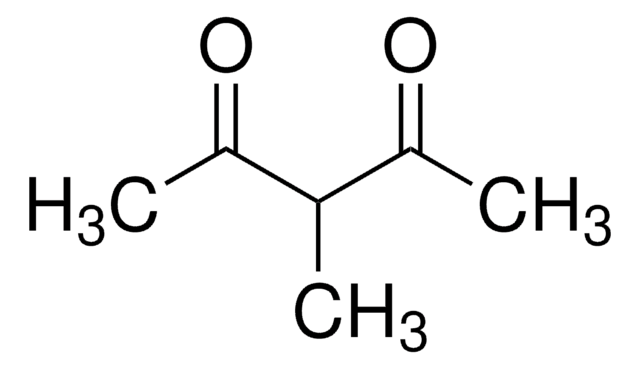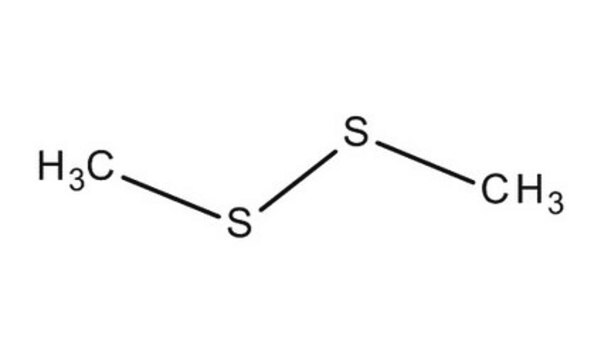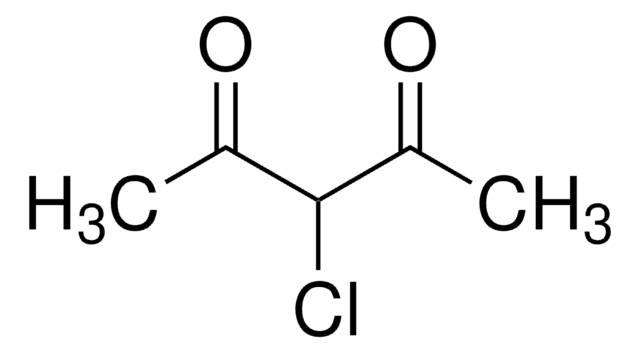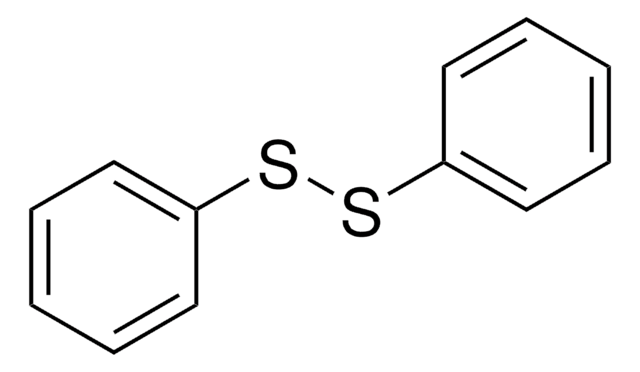Kluczowe dokumenty
320412
Dimethyl disulfide
99%
Synonim(y):
DMDS, Methyl disulfide
About This Item
Polecane produkty
gęstość pary
3.24 (vs air)
ciśnienie pary
22 mmHg ( 20 °C)
Próba
99%
Formularz
liquid
temp. samozapłonu
>572 °F
granice wybuchowości
16 %
współczynnik refrakcji
n20/D 1.525 (lit.)
bp
109 °C (lit.)
mp
−85 °C (lit.)
gęstość
1.046 g/mL at 25 °C (lit.)
grupa funkcyjna
disulfide
ciąg SMILES
CSSC
InChI
1S/C2H6S2/c1-3-4-2/h1-2H3
Klucz InChI
WQOXQRCZOLPYPM-UHFFFAOYSA-N
Szukasz podobnych produktów? Odwiedź Przewodnik dotyczący porównywania produktów
Hasło ostrzegawcze
Danger
Zwroty wskazujące rodzaj zagrożenia
Zwroty wskazujące środki ostrożności
Klasyfikacja zagrożeń
Acute Tox. 3 Inhalation - Acute Tox. 3 Oral - Aquatic Acute 1 - Aquatic Chronic 1 - Eye Irrit. 2 - Flam. Liq. 2 - Skin Sens. 1 - STOT SE 1 Inhalation - STOT SE 3
Organy docelowe
Central nervous system, Upper respiratory tract
Kod klasy składowania
3 - Flammable liquids
Klasa zagrożenia wodnego (WGK)
WGK 3
Temperatura zapłonu (°F)
59.0 °F - closed cup
Temperatura zapłonu (°C)
15 °C - closed cup
Środki ochrony indywidualnej
Eyeshields, Faceshields, Gloves, type ABEK (EN14387) respirator filter
Wybierz jedną z najnowszych wersji:
Masz już ten produkt?
Dokumenty związane z niedawno zakupionymi produktami zostały zamieszczone w Bibliotece dokumentów.
Klienci oglądali również te produkty
Nasz zespół naukowców ma doświadczenie we wszystkich obszarach badań, w tym w naukach przyrodniczych, materiałoznawstwie, syntezie chemicznej, chromatografii, analityce i wielu innych dziedzinach.
Skontaktuj się z zespołem ds. pomocy technicznej

